Bass Players To Know: Gerald Veasley
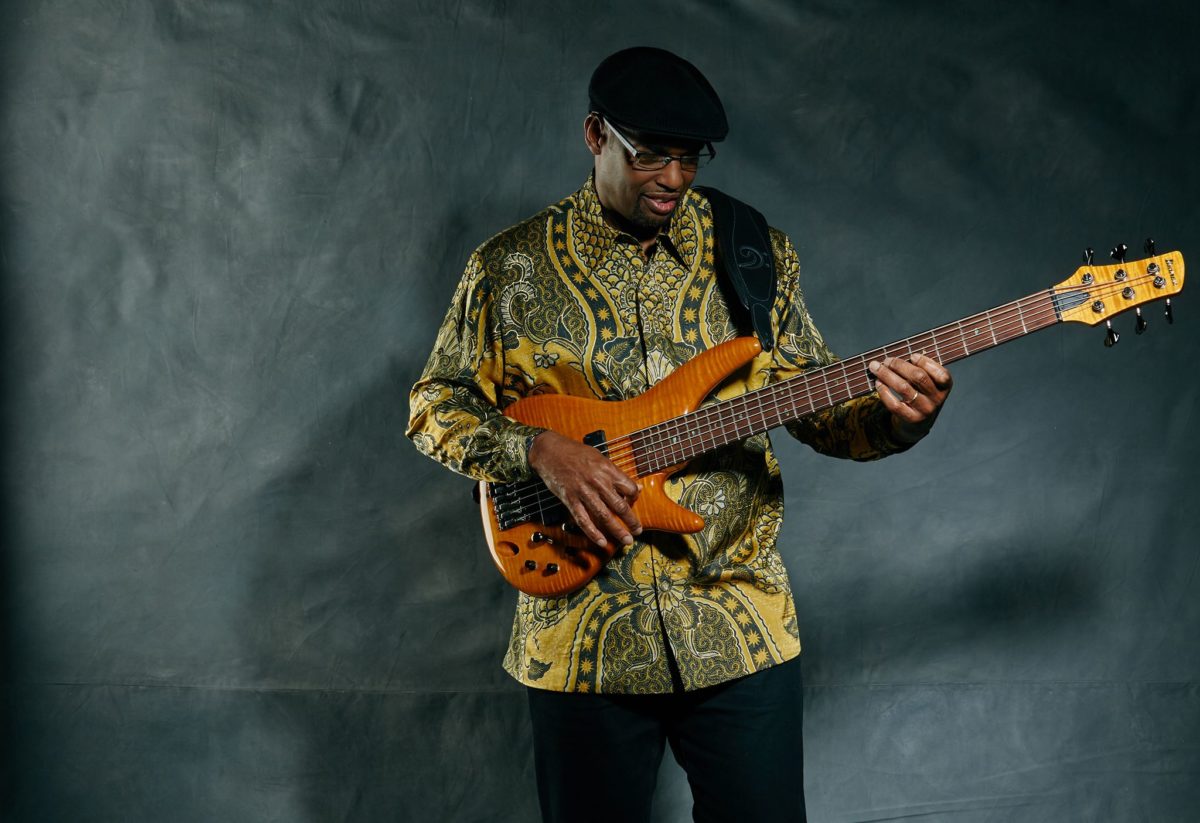
There’s an old George Bernard Shaw quote, “Those who can, do. Those who can’t, teach.” This statement has plagued our pedagogical system and has been proven false time and time again. My favorite exception to this rule is Gerald Veasley, a bass player who most certainly does and, for that matter, does a lot. His artistry and talent can be heard on records by Grover Washington, Jr., The Zawinul Syndicate, Teddy Pendergrass, the Jaco Pastorius Big Band, and as a solo artist with live and studio recordings. Veasley also happens to be an indispensable member of the Philadelphia music scene. He admirably contributes to the city’s cultural continuity by leading Jazz Philadelphia and spearheading the learning community of Gerald Veasley’s Bass Boot Camp. Marrying his experience in the local and international music scene with his passion for education and culture, Veasley serves the community as a Bass Player To Know.
So Who Is Gerald Veasley?
A life-long member of the Philadelphia music scene, Veasley received a bass at the age of twelve and immediately immersed himself in the instrument. After finding like-minded players, he began rehearsing with an omnivorous and genre-blending approach to learning and performing music. While attending the University of Pennsylvania for law, he chose to change paths and pursue music as a profession. Veasley found footing in the gospel world, worked with the jazz ensemble Reverie and began touring with saxophonist Odean Pope. He was invited to audition for Joe Zawinul and became a member of The Zawinul Syndicate from 1989 through the mid-1990s.
Meanwhile, Veasley continued to work as a session player and contributed to records by Grover Washington, Jr., Teddy Pendergrass, The Dixie Hummingbirds, Pieces of a Dream, the Jaco Pastorius Big Band, Chuck Loeb, Kirk Whalum, and many others. Attracting the attention of Heads Up Records, Veasley embarked on a solo career in the early 1990s, resulting in a variety of live and studio recordings including Look Ahead (1992), Soul Control (1997), At The Jazz Base (2005), and Your Move (2009), among others. His more recent work highlights the artistry of Charles Mingus with the Electric Mingus Project (2011) and celebrates a local venue, Live At South (2018).
An avid educator and cultural advocate, Veasley has remained at the forefront of the Philadelphia music scene. In addition to working with local venues and hosting performances, he serves as a faculty member at the University of the Arts and acts as the Artist Director and Co-Founder of Gerald Veasley’s Bass Boot Camp. He currently serves as the President of Jazz Philadelphia, an initiative to support the city’s venues and performers while promoting arts education and encouraging philanthropic, civic, and communal engagement in the arts.
Let’s Talk Style
Ask any Philadelphian to describe the culture of their city, their music, or their community, and the answer you’re likely to hear is “Philly Soul.” Sure, this alludes to soul music in the traditional sense—a genre with a proclivity for getting people on the dance floor—but it also reflects the emotional energy, intelligence, and acceptance of what it means to be human; in other words, of having soul. Veasley embodies this whether he’s performing his own material or fitting into another ensemble. His dedication to the craft of composition, performance, and technical excellence is paired with the pride he takes in creating opportunities for his fellow players to thrive. His performance always carries with it a smile, showcasing exactly how joyful the act of music-making can be. This translates to those he plays with and to those who listen, infectiously manifesting that joy on the faces of others. His attitude is contagious, his playing exquisite, and his disposition a beautiful reflection of Philly Soul.
Often donning a six-string bass, Veasley is able to fulfill a variety of musical roles, from maintaining the bottom end to playing chords, soloing, or performing the melody. While establishing and maintaining a groove, he often settles into the lower register to solidify the pocket and provide the foundation for the band. Always mindful of articulation, he pulls from a variety of plucking-hand techniques to evolve or add nuance to a musical phrase.
Upon playing a melody or taking a solo, he’s comfortable traversing the range of the instrument and exploring the upper register. This allows for the notes to sing and to be manipulated as a vocalist would embellish a melody; his use of vibrato, bending, and single-note sustain enhances the lyrical quality of his phrases. Veasley’s approach to melodic composition showcases his eclectic vocabulary, superb grasp of harmony, and technical facility. He often adapts a particular phrase to a variety of chords in the progression or ping-pongs from a root note to other intervals in an ascending melodic phrase.
Uniquely skilled as a bandleader and featured artist, Veasley is able to assert himself and command the stage. He cleverly interacts with the audience’s expectations, delivers compelling banter, and sets up captivating moments through the use of space, silence, and playful anticipation.
Where Can I Hear Him?
“Deeper” (Gerald Veasley: At The Jazz Base)
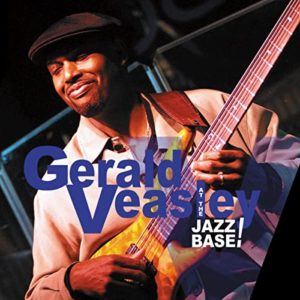 You’d be hard pressed to find a more accurately titled tune. The catchy melody, the swagger of the rhythm section, and the lowest of low notes manage to capture exactly what it means to go deeper into the pocket. Veasley playfully intersperses high-register hammer-ons or quick bursts of notes to grab your attention between unison lines and band breaks. He cleverly sets up moments of anticipation; you wait on the edge of your seat and can’t help but smile when the band resolves.
You’d be hard pressed to find a more accurately titled tune. The catchy melody, the swagger of the rhythm section, and the lowest of low notes manage to capture exactly what it means to go deeper into the pocket. Veasley playfully intersperses high-register hammer-ons or quick bursts of notes to grab your attention between unison lines and band breaks. He cleverly sets up moments of anticipation; you wait on the edge of your seat and can’t help but smile when the band resolves.
Listen: iTunes | Amazon MP3
“San Sebastian” (The Zawinul Syndicate: Lost Tribes)
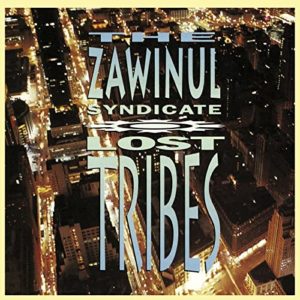 Inspired by the flamenco tradition, Veasley asserts himself as a composer, soloist, and primary performer. Beginning with quick melodic phrases and chordal punctuation, he gracefully traverses the instrument the same way a confident traveler navigates a busy city. He translates a widely-used flamenco guitar technique to the electric bass—energetic strumming of chords with melodic phrases interspersed. His playful use of chord voicing demonstrates harmonic mastery while his technical adaptation reflects a sophisticated appreciation of world music and boundary-pushing musical aptitude.
Inspired by the flamenco tradition, Veasley asserts himself as a composer, soloist, and primary performer. Beginning with quick melodic phrases and chordal punctuation, he gracefully traverses the instrument the same way a confident traveler navigates a busy city. He translates a widely-used flamenco guitar technique to the electric bass—energetic strumming of chords with melodic phrases interspersed. His playful use of chord voicing demonstrates harmonic mastery while his technical adaptation reflects a sophisticated appreciation of world music and boundary-pushing musical aptitude.
Listen: iTunes | Amazon MP3
“Earthworm” (Gerald Veasley: Live At South )
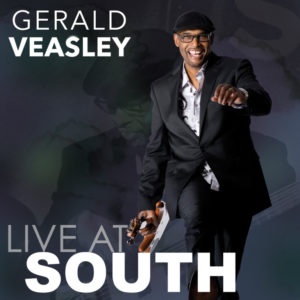 This musical odyssey gives us everything we want and more: a solid pocket to encourage call-and-response, an evergreen groove with tasteful fills, and a bass solo that wavers between melodic and mind-boggling. Veasley’s clever usage of effects pairs well with his technical prowess and ability to develop themes. This track also serves as a three-for-one: the band breaks, changes the tempo, and evolves the feel—first by alluding to a New Orleans second-line groove and then transitioning into the jazz world with an energetic walking bass line.
This musical odyssey gives us everything we want and more: a solid pocket to encourage call-and-response, an evergreen groove with tasteful fills, and a bass solo that wavers between melodic and mind-boggling. Veasley’s clever usage of effects pairs well with his technical prowess and ability to develop themes. This track also serves as a three-for-one: the band breaks, changes the tempo, and evolves the feel—first by alluding to a New Orleans second-line groove and then transitioning into the jazz world with an energetic walking bass line.
Listen: iTunes | Amazon MP3
How about you? What’s your favorite tune or album with Gerald Veasley?
Please share with us in the comments.
Ryan Madora is a professional bass player, author, and educator living in Nashville, TN. In addition to touring and session work, she teaches private lessons and masterclasses to students of all levels. Visit her website to learn more!

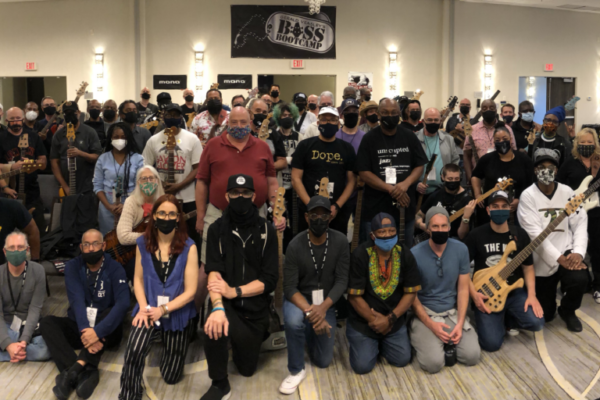
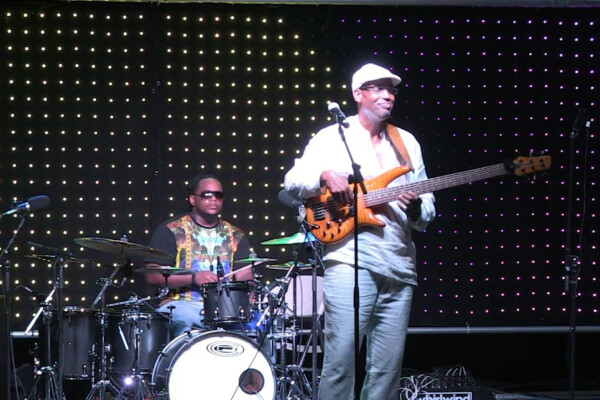
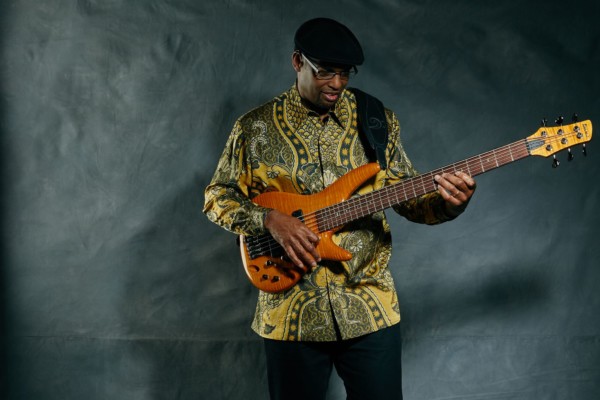
Gerald has a lasting influence on my bass playing, and also in just being an all around musician, and human being. I will never forget my times attending the Bass Bootcamps, both the ones in Philadelphia, and on the Capital Jazz SuperCruises. Not only did he teach us bass techniques, but he talked to us about the ways that we should conduct ourselves on the bandstand. I specifically remember a talk he he gave us regarding techniques to conquer stage fright. I have since shared those techniques with fellow musicians in my community. I owe much to Gerald, and the other musicians, and support staff that he brings to his BootCamps. I will always be grateful for his mentorship, and friendship.
When I first saw Gerald play live in a trio with Odean Pope and Cornell Rochester back in 1981 in a jazz festival in Germany, he just blew my mind. That was the first time I saw an electric bass player in a modern jazz configuration. His ability to play the groove while soloing and playing melodies almost at the same time was incredible. His tone was amazing too. Very bright and clear. The interaction between those 3 musicians was excellent. Constantly listening and reacting to each other. He’s the one that influenced me to learn that instrument.